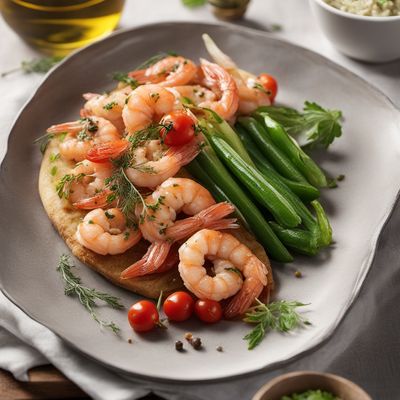
Ingredient
Common walnut
The Nutty Marvel of Nature
Common walnuts are medium-sized nuts with a hard shell that encases a wrinkled, cream-colored kernel. They have a rich, buttery flavor and a slightly bitter undertone. The texture of the kernel is firm and crunchy, making it a perfect addition to various dishes. Common walnuts are commonly used in baking, salads, pesto, and as a topping for desserts and breakfast dishes.
Origins and history
Walnuts have a long history dating back thousands of years. They are believed to have originated in the regions of Central Asia and have been cultivated for their nuts since ancient times. Walnuts were highly valued by ancient civilizations, including the Greeks and Romans, who considered them a symbol of intellect and fertility. Today, walnuts are grown in many parts of the world, with major producers including the United States, China, and Iran. They are widely consumed and appreciated for their nutritional benefits and culinary versatility.
Nutritional information
Common walnuts are a nutritional powerhouse, packed with healthy fats, protein, fiber, vitamins, and minerals. They are particularly rich in omega-3 fatty acids, which are beneficial for heart health. Additionally, walnuts provide antioxidants that help protect the body against oxidative stress. However, they are calorie-dense, so it is important to consume them in moderation.
How to select
When selecting common walnuts, look for nuts that feel heavy for their size and have intact shells. Avoid walnuts with visible cracks, holes, or mold, as they may indicate poor quality or rancidity. It is best to purchase walnuts in their shell to ensure freshness and prevent exposure to air, which can cause them to spoil. Store shelled walnuts in an airtight container in the refrigerator or freezer to extend their shelf life.
Storage recommendations
Common walnuts can be grown in home gardens or orchards, provided the climate and soil conditions are suitable. They require well-drained soil and full sun exposure to thrive. However, growing walnuts can be a long-term commitment, as it takes several years for the trees to reach maturity and start producing nuts. It is recommended to consult local gardening resources or experts for specific guidance on growing walnuts in your area.
Preparation tips
To maintain the freshness and quality of common walnuts, store them in an airtight container in the refrigerator or freezer. The cool temperature helps prevent the nuts from turning rancid and extends their shelf life. Shelled walnuts can last for several months in the refrigerator and up to a year in the freezer. It is best to shell the nuts just before using them to preserve their flavor and texture.
Substitutions
Common walnuts can be enjoyed in a variety of ways. They are commonly used in baking, such as in cakes, cookies, bread, and pastries, to add a nutty flavor and crunch. They can also be added to salads, grain dishes, and stir-fries for an extra layer of texture and taste. Additionally, walnuts make a delicious topping for oatmeal, yogurt, ice cream, and other desserts. They can be ground into a paste to make homemade walnut butter or used as a base for pesto.
Availability
Common walnuts are widely available in grocery stores, supermarkets, and specialty food stores. They can also be purchased online, offering a convenient option for those seeking a wide variety of options.


